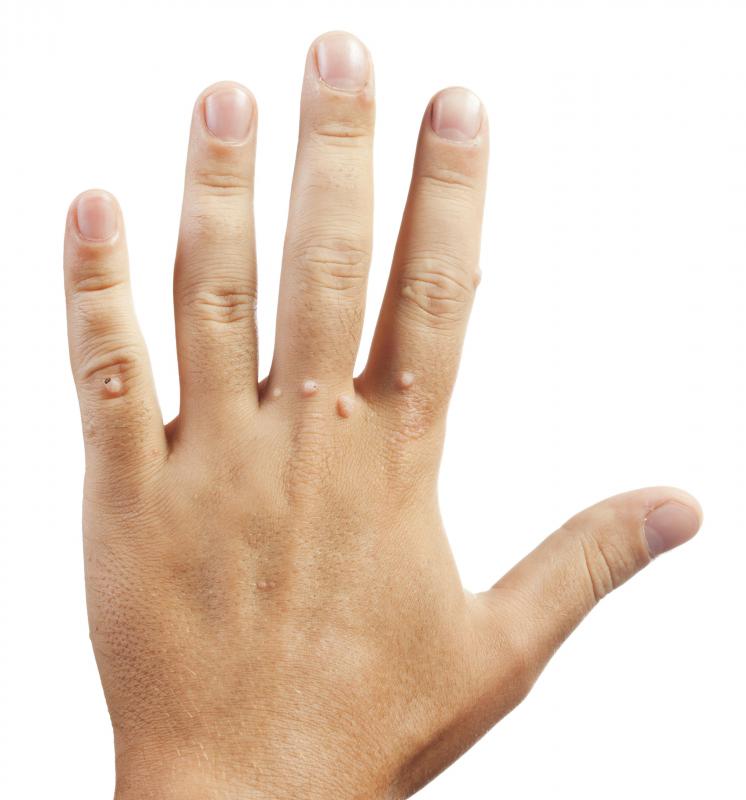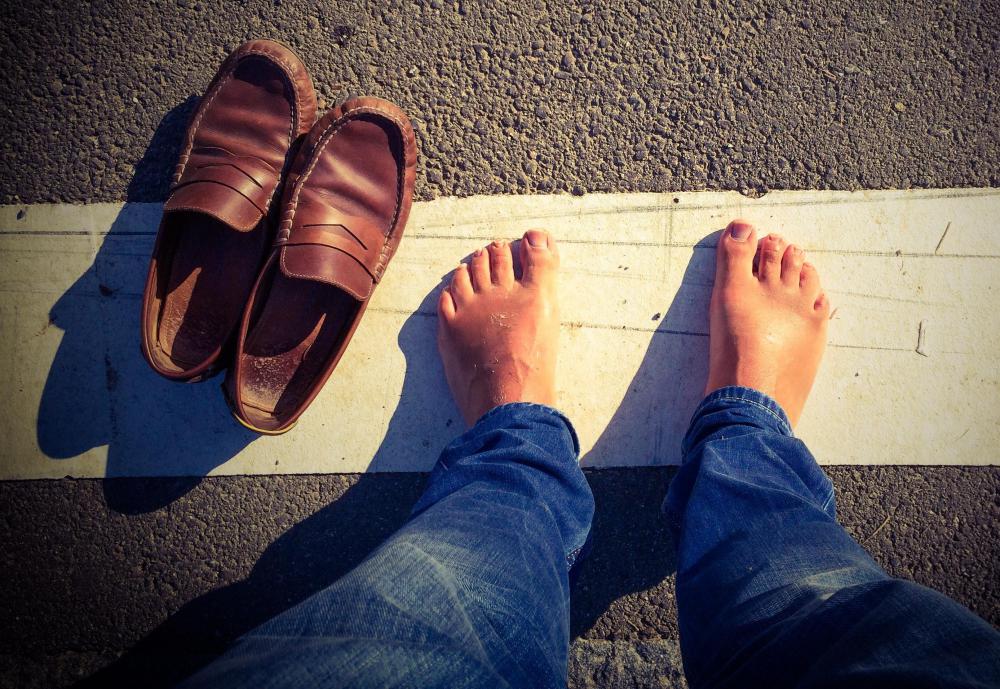At BeautyAnswered, we're committed to delivering accurate, trustworthy information. Our expert-authored content is rigorously fact-checked and sourced from credible authorities. Discover how we uphold the highest standards in providing you with reliable knowledge.
How Do I Tell If a Bump Is a Wart or Skin Tag?
You can tell if a bump is a wart or skin tag based on its shape, color, size, and texture. Skin tags are usually narrow and hang off the skin's normal surface on a stalk, and they are also often quite similar in color to the surrounding skin. A skin tag can also often be less firm than a wart. Warts are generally raised circular bumps that are harder and have a rougher texture than skin tags. Different areas of the body can develop a wart or skin tag, depending on some of your individual health conditions.
Recognizing warts can sometimes be more of a challenge because some of them can have rougher surfaces if they are on an area of the body that frequently rubs against clothing or other surfaces. Some of these warts can even develop scabs or dry skin patches on their tops, making them closer in appearance to other skin lesions, such as blisters. Plantar warts on the soles of the feet are especially prone to scabbing from friction against the inside of the shoe if you walk around with the wart for a long time before having it removed. Other warts that occur on the hands or other areas not prone to friction often have a bumpy surface without the rough texture, though some may have noticeable small dots of blood just under the wart surface.

Identifying a wart or skin tag can be done without much of the guesswork based on some of your basic medical history. You are generally more likely to develop skin tags if you are approaching middle age and have a family history of them. A common virus known as the papillomavirus is responsible for wart formation, and it can be spread fairly easily through casual contact. A wart or skin tag can appear as an isolated growth or in clusters.

Skin tags are usually smaller and more flexible than warts, and many of them with stalks can be gently pulled away from the skin surface with minimal pain or irritation. Both skin tags and warts can grow on any body surface, although the most common places for skin tags are generally the torso, arms, or neck. The average skin tag does not have any blood flecks inside it as is the case with some warts. It is simply a tiny tube of excess skin. Some people opt for removing skin tags themselves with a razor blade or pair of scissors, but most physicians advise against this type of at-home excision for either a wart or skin tag.
AS FEATURED ON:
AS FEATURED ON:
















Discussion Comments
I have taken fingernail clippers and grabbed the skin tag and just rip it right off! It will bleed freely for a good 10 minutes but then the tag is gone!
I have had skin tags. After reading and learning about them I opted for the simplest remedy first. I tied a string around the base tightly cutting off the oxygen/blood. It dried up, turned dark and fell off by itself.
@pastanaga - Often, although not always, warts are difficult to remove because the person who has them isn't following instructions as carefully as they should be. People don't bother to use the medicine every night, or whatever the doctor told them to do. They just want the wart to be frozen off, or whatever.
It's too hard to do that with a wart on the foot though. Baring surgery, which often won't remove the whole wart without damaging the foot, there's not much a doctor can do except treat the wart over the long run and hope it goes away.
And it will go away faster if the person with the wart follows all the doctor's instructions to the last detail.
@Mor - Well, some people have many more skin tags than others, particularly if they are a symptom of a particular illness. I know I've been lucky not to get many so far, since I have polycystic ovarian syndrome and you can get skin tags from having that.
And I don't think there's all that much wrong with removing them yourself either, as long as you are smart about it. Use a very sharp knife and be sure to apply disinfecting ointment afterwards. Two seconds and you've saved yourself a hundred dollars worth of doctor fees.
It's not like with warts where you really do need a doctor to deal with them. They can take forever to remove too, my step father has been complaining about a wart he has on his foot for a long time and the doctors don't seem to be able to do much for it.
Ouch, I have a couple of skin tags and I've never even considered removing them myself. I mean, I know some people have a lot of them and it might seem like the better option, considering how expensive the doctor can be, but I'd be too worried about scarring and infection to even try.
I don't really mind them all that much. My aunt had quite a few before she died, so I imagine I might get some more as I get older.
I might consider skin tag removal surgery at that point, but even if I had a dozen I don't think they would bother me. They don't really look bad, they just look like something that makes you individual, like freckles.
Post your comments